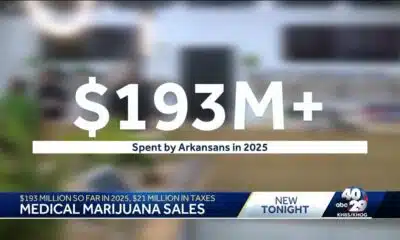Mass shootings have become a tragic staple in the American news cycle. According to the nonprofit organization Gun Violence Archive, there were over 640 mass shootings in the U.S. in 2022. Though these horrific incidents often receive widespread media coverage, when it comes to gun crimes in America, they are only the tip of the iceberg.
The Bureau of Alcohol, Tobacco, Firearms, and Explosives traced a total of over 456,000 firearms likely linked to a crime in the United States in 2021, the most recent year of available data. Each of these traced firearms is assigned one of 59 categories that describe the circumstances in which it was recovered by law enforcement.
The ATF traced a total of 4,744 firearms in Mississippi in 2021. Excluding potential crimes which, by definition, always involve a firearm such as illegal weapon possession, the most common category of circumstances to which traced firearms were linked in the state were drug related. This classification accounted for 13.5% of all firearms traced by the ATF in the state in 2021.
The two other most common categories for traced firearms in Mississippi in 2021 were related to aggravated assault and property crimes, which accounted for 4.3% and 3.9% of all traced firearms, respectively.
Click here to read our full methodology.
| State | Total traced guns, 2021 | Top category for traced guns | 2nd most common category for traced guns | 3rd most common category for traced guns |
|---|---|---|---|---|
| Alabama | 8,847 | Dangerous drugs | Property crimes | Family offense |
| Alaska | 797 | Dangerous drugs | Traffic offense | Simple assault |
| Arizona | 12,113 | Aggravated assault | Dangerous drugs | Homicide |
| Arkansas | 3,541 | Dangerous drugs | Aggravated assault | Property crimes |
| California | 54,338 | Dangerous drugs | Aggravated assault | Obstruction of justice |
| Colorado | 7,051 | Dangerous drugs | Aggravated assault | Suicide |
| Connecticut | 1,617 | Family offense | Dangerous drugs | Homicide |
| Delaware | 1,678 | Suicide | Dangerous drugs | Aggravated assault |
| Florida | 34,491 | Aggravated assault | Dangerous drugs | Family offense |
| Georgia | 20,472 | Dangerous drugs | Aggravated assault | Property crimes |
| Hawaii | 115 | Dangerous drugs | Attempted homicide | Suicide |
| Idaho | 1,376 | Aggravated assault | Dangerous drugs | Suicide |
| Illinois | 19,188 | Dangerous drugs | Homicide | Family offense |
| Indiana | 10,349 | Dangerous drugs | Family offense | Homicide |
| Iowa | 2,576 | Dangerous drugs | Family offense | Suicide |
| Kansas | 4,303 | Dangerous drugs | Aggravated assault | Family offense |
| Kentucky | 6,812 | Dangerous drugs | Homicide | Simple assault |
| Louisiana | 13,823 | Dangerous drugs | Aggravated assault | Homicide |
| Maine | 513 | Burglary | Dangerous drugs | Family offense |
| Maryland | 9,857 | Family offense | Simple assault | Homicide |
| Massachusetts | 3,222 | Dangerous drugs | Aggravated assault | Family offense |
| Michigan | 12,329 | Aggravated assault | Dangerous drugs | Homicide |
| Minnesota | 4,605 | Dangerous drugs | Aggravated assault | Family offense |
| Mississippi | 4,744 | Dangerous drugs | Aggravated assault | Property crimes |
| Missouri | 10,213 | Dangerous drugs | Property crimes | Aggravated assault |
| Montana | 1,188 | Dangerous drugs | Aggravated assault | Homicide |
| Nebraska | 2,240 | Threat | Dangerous drugs | Suicide |
| Nevada | 6,735 | Traffic offense | Dangerous drugs | Family offense |
| New Hampshire | 705 | Family offense | Dangerous drugs | Suicide |
| New Jersey | 4,685 | Aggravated assault | Dangerous drugs | Family offense |
| New Mexico | 4,114 | Aggravated assault | Dangerous drugs | Homicide |
| New York | 10,310 | Homicide | Dangerous drugs | Aggravated assault |
| North Carolina | 23,104 | Dangerous drugs | Family offense | Aggravated assault |
| North Dakota | 778 | Dangerous drugs | Suicide | Family offense |
| Ohio | 20,826 | Dangerous drugs | Family offense | Homicide |
| Oklahoma | 5,302 | Dangerous drugs | Simple assault | Homicide |
| Oregon | 5,459 | Dangerous drugs | Family offense | Suicide |
| Pennsylvania | 15,370 | Dangerous drugs | Aggravated assault | Family offense |
| Rhode Island | 666 | Dangerous drugs | Family offense | Homicide |
| South Carolina | 10,713 | Dangerous drugs | Homicide | Aggravated assault |
| South Dakota | 832 | Dangerous drugs | Aggravated assault | Burglary |
| Tennessee | 15,531 | Dangerous drugs | Simple assault | Property crimes |
| Texas | 45,618 | Dangerous drugs | Aggravated assault | Homicide |
| Utah | 3,030 | Dangerous drugs | Family offense | Traffic offense |
| Vermont | 243 | Dangerous drugs | Family offense | Homicide |
| Virginia | 12,184 | Dangerous drugs | Suicide | Homicide |
| Washington | 5,586 | Dangerous drugs | Family offense | Aggravated assault |
| West Virginia | 1,698 | Dangerous drugs | Homicide | Family offense |
| Wisconsin | 7,062 | Dangerous drugs | Family offense | Homicide |
| Wyoming | 298 | Dangerous drugs | Homicide | Suicide |









































